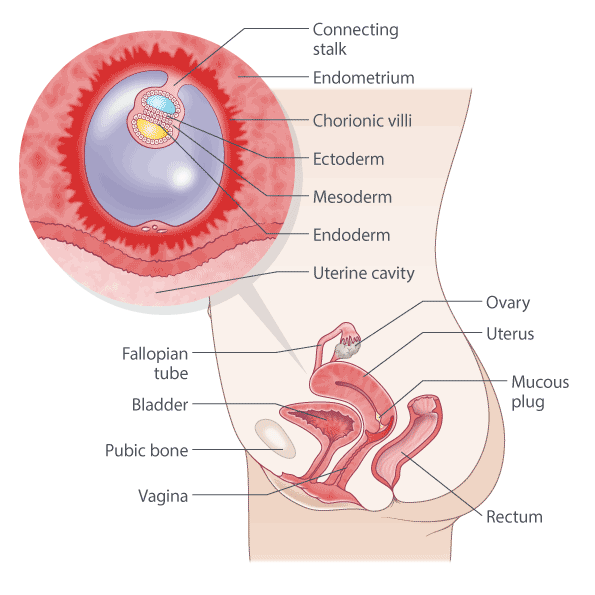You at 4 weeks pregnant
The fertilised egg moves down your fallopian tube to the uterus, where it implants itself in the endometrium. This can take 3-10 days.
You might have a small amount of bleeding – or ‘spotting’ – around the time of implantation. This bleeding – called implantation bleeding – tends to be pinkish brown in colour. It comes and goes over a couple of days. It’s unusual for there to be blood clots. If you're worried, talk to your GP.
You might also experience mild cramping around the time of implantation.
You might not notice any changes in your body just yet, but by the end of the week you’ll probably have missed your period and could be wondering whether you’re pregnant.

Your baby when you’re 4 weeks pregnant
From the moment of conception, the fertilised egg – called a blastocyst – starts dividing itself. By the end of this week, it’s a ball of about 200 cells and is about 4-5 mm across. Inside the ball, 3 layers are forming:
- The ectoderm – this becomes your baby’s nervous system, brain, hair and skin.
- The endoderm – this becomes the gut and other internal organs.
- The mesoderm – this develops into the skeleton, blood systems and muscles.
The outside of the blastocyst divides into 2 parts:
- The outside part sends out little tentacles – called chorionic villi – which bury into your endometrium. The chorionic villi develop into the placenta.
- The inside part becomes the amniotic sac.
Identical twins
Identical, or monozygotic, twins are conceived when a single sperm fertilises an egg. At a very early stage in the cell division process, the fertilised egg divides into 2 and starts forming 2 babies. Identical twins have the same genes, so they’re the same sex.